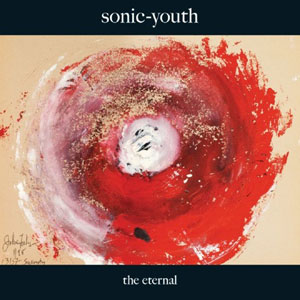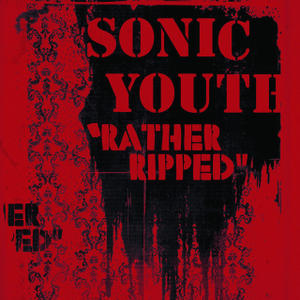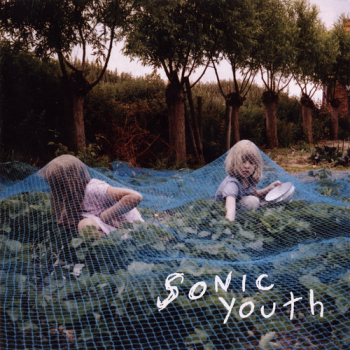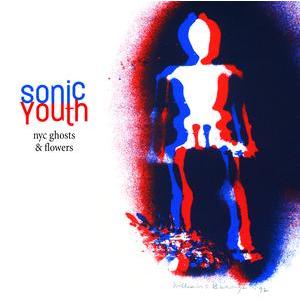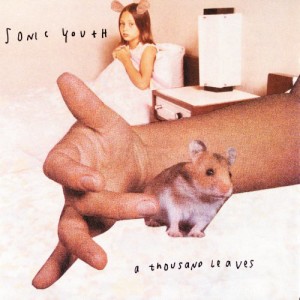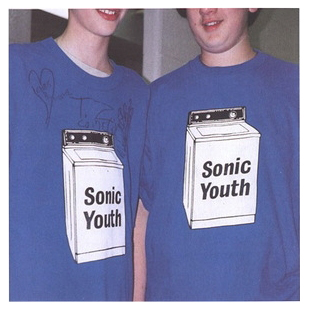So this is it. This is the final installment. Well, maybe not the final final installment for me, I mean I could easily do a bunch more posts on each of the SYR recordings and some other various things that are out there, but to be completely honest, despite the fact that Sonic You are undoubtedly one of my favorite artists of all time, I am far from a completist. I do have all of the “standard” stuff: studio releases (obviously) a few 45s, tapes of stuff that I recorded off the radio when the local college station in Rochester, NY would play some rare stuff, and so on. And I’m sure that through various people I could find all that there is to find out there. But posting about things like that would lack the authenticity and honesty that these posts have had because I wouldn’t have time to really make a connection with them.
Anyway, speaking of the final installment, this is probably the final proper Sonic Youth release that any of us will ever hear. The only thing, that I’m aware of anyway, that was released after this was the final installment of the SYR series, a set of instrumental pieces used as incidental music for a film. That album is their most accessible SYR release, for sure.
“The Eternal” really showed promise. The band more and more was becoming their youthful selves again. There’s plenty of grit and noise, and it seemed like the head of steam that had been building up since that patch of weaker albums, “A Thousand Leaves” and “NYC Ghosts & Flowers,” was finally ready to pay off. The band was getting back into shape after trying out some more experimental stuff in the later part of their career.
But, as usual, these posts are more about my experiences with the albums than they are about the albums themselves. This album came out only a few weeks after I had finished grad school. I was spending the summer living off of whatever savings I had left over while waiting for my job to begin in September. It was pretty much the laziest few months of my life and I think that I still feel guilt about them. Pretty much all that I did was read and listen to music, but even after all that listening to music I still don’t remember making an immediate connection with the album. It wasn’t until a few years later that I started listening to the album in earnest.
I definitely wasn’t thinking that this was going to be their last album. There I was starting to take them for granted again. I caught them live once more in Toronto which I thought was going to be the best show ever, but was sorely disappointed. Their setlist at that show, at the legendary Massey Hall of all places, was basically just this album with the songs on shuffle. Sure, they trotted out “Death Valley ’69” at the end, but I was just not impressed. That is maybe what makes me the most sad. That I could have such fond memories of them, but the last “interaction” that I had with the band was a disappointing show in an amazing venue.
It was just too much to take in at once. That isn’t what I want in a live show, and their energy was just not there at all. Kim’s dancing was reduced to what seemed like going through the motions, with little to no emotion. It was just a downer, and I would have been even sadder about the show had I not been in Canada where the beer is like moonshine.
Listening now, I think that this is a really good album. Maybe not the strongest way to go out, but still strong. It’s certainly better than anything we have gotten from Thurston as a solo artist since then. Out of nowhere it seems Lee Ranaldo has become the savior with his most recent two solo albums being the complete polar opposite to the boring dad-rock that Thurston churned out on “Demolished Thoughts.” And that “The Eternal” has TWO Lee Ranaldo tracks probably should have clued us all in to the fact that the usual song writing forces were not working to full effect in the year or so leading up to it.
Anyway, that is about it with these posts. I’m probably going to periodically talk about some of the SYR recordings, as those are currently a little more in line with the music that I have been studying lately and there is some really interesting stuff going on in those, but whatever it is that I might write about them will be from a more analytical standpoint.
Thanks for reading my un-edited and rambling remembrances.

